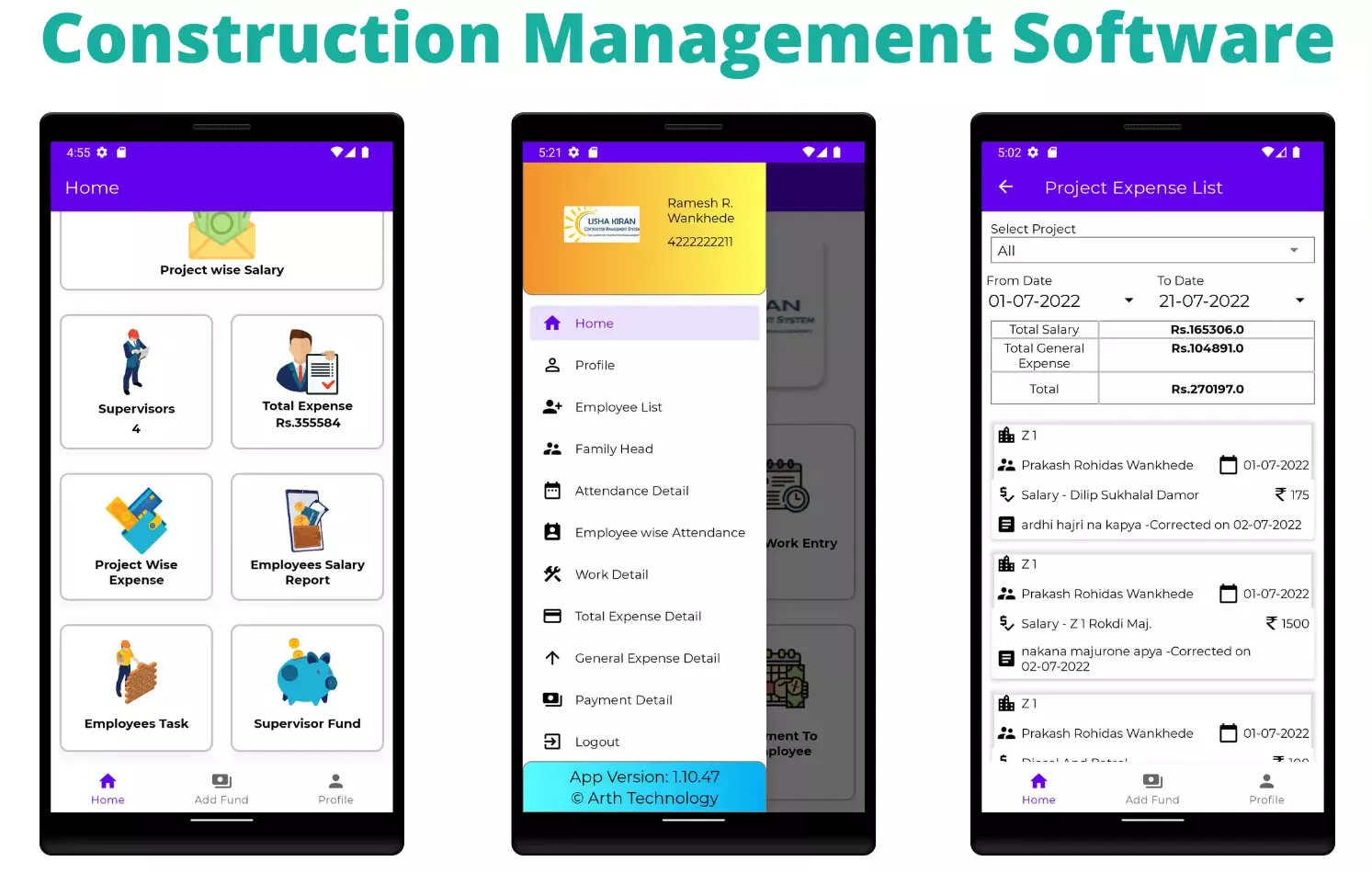Construction Project Management Software: Optimizing Operations and Productivity
Construction Project Management Software: Optimizing Operations and Productivity
Blog Article
Tailored Building And Construction Administration Software: Optimizing Source Allotment and Budgeting Methods
These innovative tools use a nuanced strategy to optimizing resource allotment and budgeting strategies, essential elements for effective project execution. By delving into the details of how such software can improve source allotment methods and fine-tune spending plan optimization methods, a clear path towards enhanced job effectiveness emerges.
Advantages of Tailored Software Program Solutions
Customized software application services use a myriad of benefits to building and construction monitoring companies looking for to improve effectiveness and streamline procedures. By customizing software application solutions to attend to project administration, scheduling, budgeting, and resource appropriation, companies can optimize their workflows and attain better productivity.
Another benefit of customized software application options is the capability to supply real-time understandings and analytics. Building monitoring companies can utilize data-driven decision-making to keep track of task development, identify bottlenecks, and make modifications quickly. This positive approach enhances job end results and aids companies remain on track with timelines and spending plans.
Enhanced Resource Allocation Techniques
Carrying out efficient source allocation approaches is critical for building and construction management companies to enhance task outcomes and make best use of productivity. Boosted source appropriation techniques include tactically appointing personnel, tools, and materials to particular jobs to make sure optimal utilization of resources. One essential facet of improved resource allocation is the capability to precisely forecast task requirements and designate resources accordingly. By leveraging construction administration software that offers real-time monitoring and reporting functions, firms can dynamically change allotments as project needs progress, bring about enhanced effectiveness and cost-effectiveness.
Moreover, improved resource allocation techniques enable building and construction firms to determine and resolve possible traffic jams or resource restraints proactively. By carrying out regular assessments of source use and efficiency metrics, supervisors can make data-driven choices to rearrange resources effectively and stop hold-ups. This aggressive approach not just boosts project timelines however also minimizes the risk of spending plan overruns as a result of inefficient resource allowance.
Budget Plan Optimization Strategies
To achieve optimum monetary performance in building and construction projects, efficient budget optimization strategies play a pivotal role in ensuring cost control and job success. One key strategy is the establishment of a thorough job spending plan that assigns resources based on priority and critical requirements. By integrating these spending plan optimization methods into building management software, project stakeholders can enhance financial planning, resource allotment, and total spending plan monitoring to drive job success and earnings.

Influence on Task Effectiveness
Optimizing building management software application can significantly boost job efficiency by simplifying interaction, improving partnership, and helping with data-driven decision-making. By centralizing job information, stakeholders can conveniently access real-time updates, decreasing hold-ups caused by miscommunication or obsolete information. Enhanced cooperation features make it possible for employee to check that interact seamlessly, despite their physical area, promoting a more natural and effective work environment. Furthermore, building and construction management software application can give important understandings through data analytics, allowing task managers to make informed decisions swiftly and properly.
Additionally, the automation of regular tasks link such as scheduling, budget plan tracking, and resource allocation can liberate important time for job teams to focus on crucial activities, ultimately quickening task shipment. The capability to keep an eye on project progress in real-time and identify possible traffic jams allows positive analytical, avoiding issues from escalating and creating delays. In general, the impact of customized building management software on task effectiveness is undeniable, supplying an affordable advantage by enhancing workflows and making best use of efficiency.
Future Trends in Construction Software Program
As the building industry proceeds to develop, advancements in innovation are shaping the future landscape of building and construction software application remedies. One considerable fad imminent is the boosting integration of expert system (AI) and equipment knowing capacities in building software program. These technologies have the possible to revolutionize just how construction jobs are taken care of by enabling anticipating analytics, automated decision-making processes, and boosted project understandings.
Another future pattern in construction software application is the expanding focus on cloud-based services. Cloud modern technology offers boosted adaptability, scalability, and availability for building and construction teams, enabling for real-time cooperation and data sharing across job stakeholders. This change in the direction of cloud-based software program is expected to improve job performance, read this post here simplify communication, and improve general project outcomes.
Moreover, the surge of Structure Details Modeling (BIM) is anticipated to continue shaping the construction software application landscape. BIM software application assists in 3D modeling, visualization, and information monitoring, bring about enhanced project coordination, lowered mistakes, and boosted task end results. Welcoming these future fads in building and construction software program will certainly be crucial for companies looking to stay affordable and drive technology in the sector.
Final Thought
Finally, tailored construction management software program uses various benefits such as boosted resource allotment approaches and budget plan optimization techniques. This software has a substantial effect on project performance by simplifying processes and boosting total efficiency (construction mangement software). As modern technology remains to development, future patterns in building and construction software program are anticipated to more optimize resource allocation and budgeting techniques for building jobs
Report this page